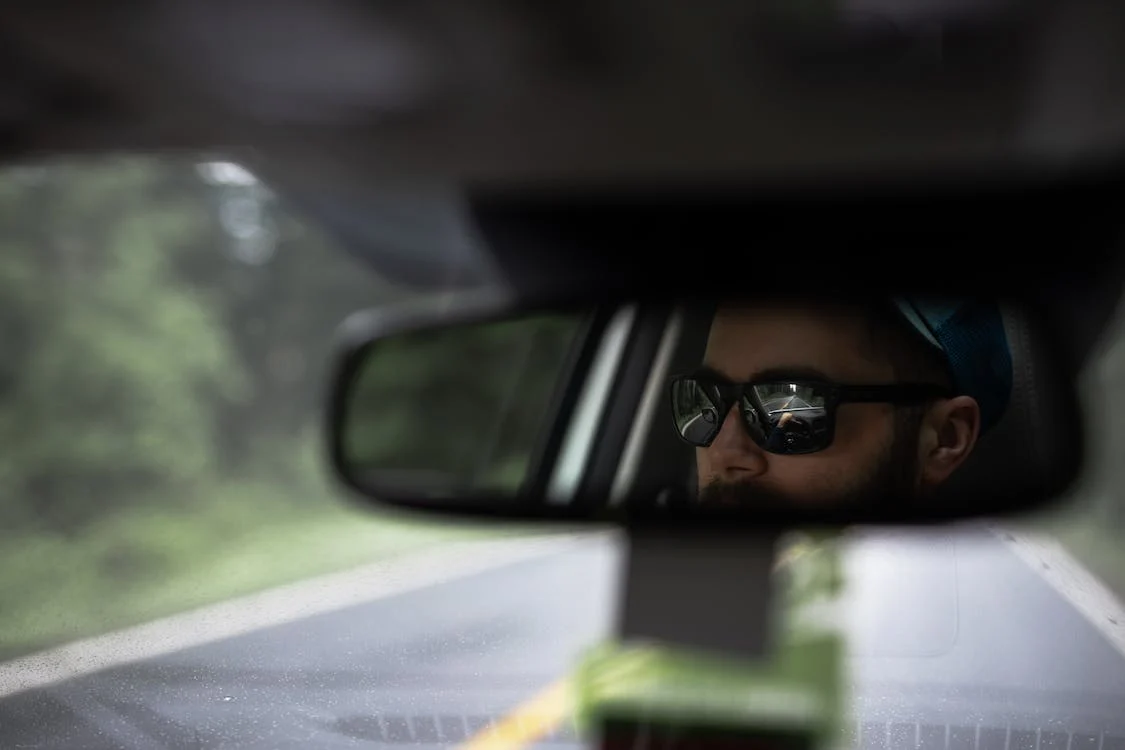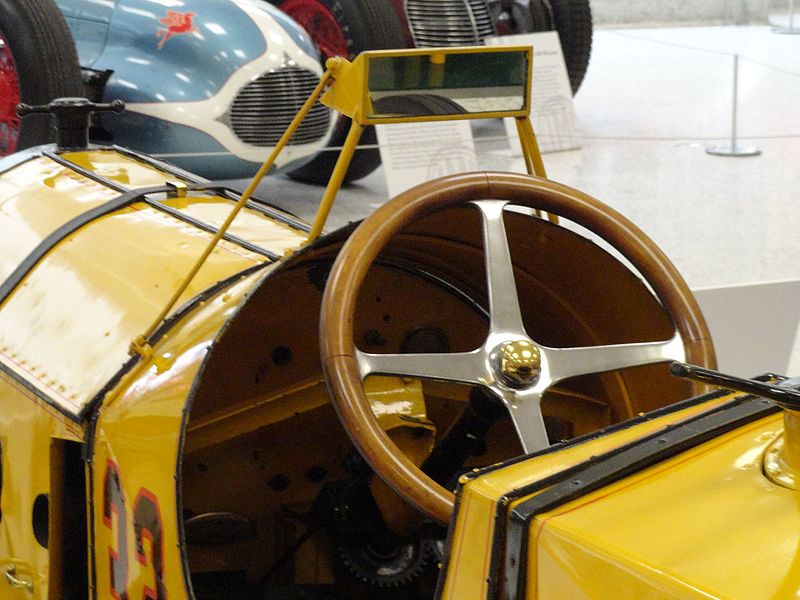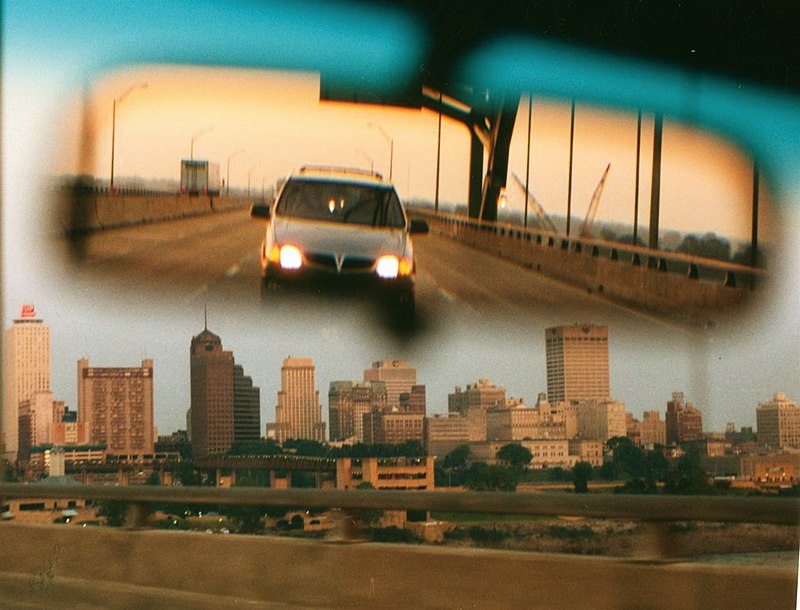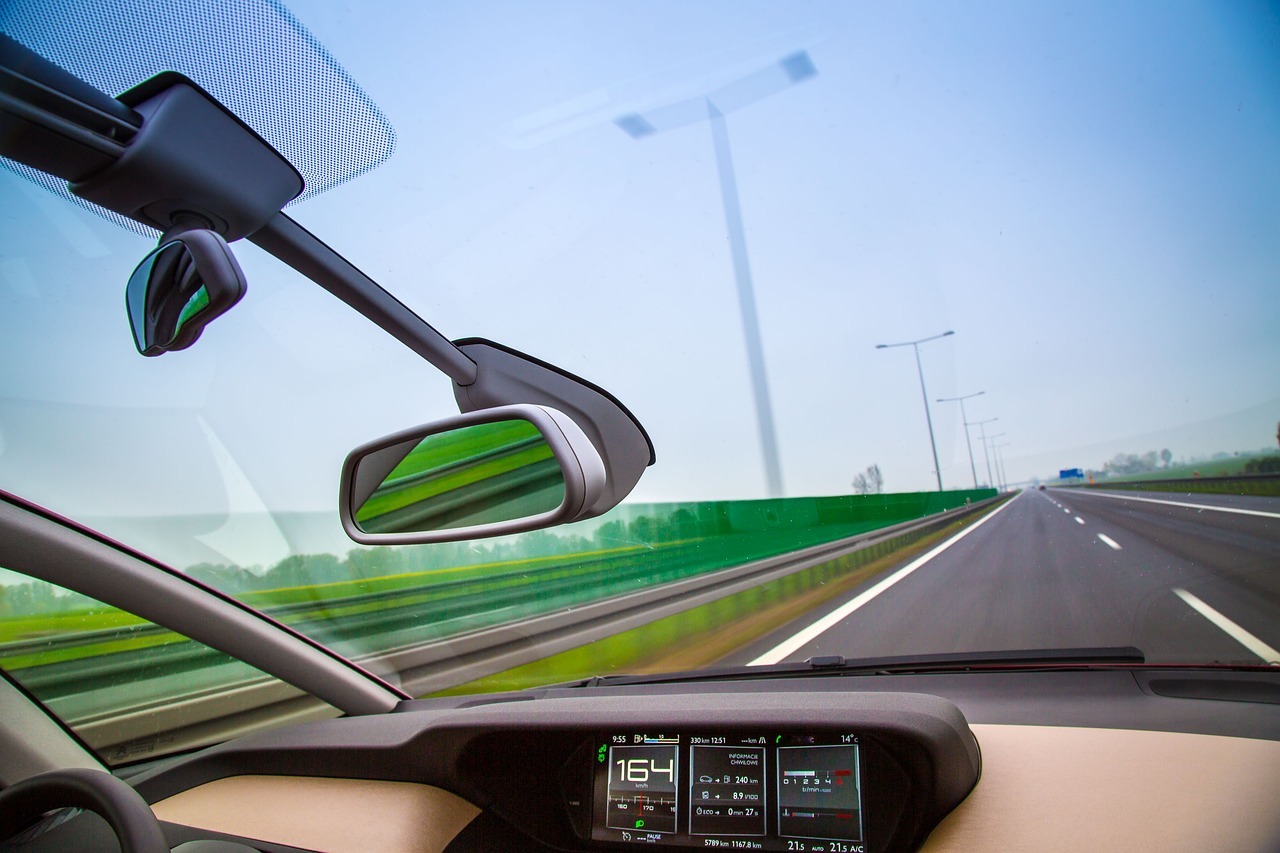The humble rear-view mirror is a small yet indispensable part of our everyday lives, quietly safeguarding us as we navigate the labyrinth of roads and highways. But have you ever wondered about its fascinating history? This unassuming device has a captivating tale to tell, one that spans over a century and is filled with innovation, unexpected inventors, and leaps in automotive safety. From its inception as a simple reflective glass to the high-tech, auto-dimming wonders of today, the rear-view mirror has come a long way.
History of Rear View Mirror
Buckle up as we embark on a reflective journey to uncover the history of the rear-view mirror, an invention that has made driving not just a convenience, but a safer adventure.
1901-1910 – The Birth of the Rear-View Mirror
The history of the rear-view mirror began in 1906 when a clever inventor named Ray Harroun made a groundbreaking move in automotive technology. Harroun was an engineer and race car driver, and he entered the inaugural Indianapolis 500 race with a car of his own design.
To gain an edge in the race, he replaced the need for a second person to sit beside him to watch for overtaking competitors by installing a mirror on his car’s dashboard. This innovation not only reduced wind resistance but also marked the birth of the first practical rear-view mirror. Harroun’s car, fittingly named the Marmon Wasp, went on to win the race, solidifying the mirror’s utility in the world of automobiles.
In late 1906, the concept of fixed mirrors for showing what lay behind closed-bodied automobiles began to gain traction. Trade magazines of the time noted their popularity and predicted their widespread adoption in the near future. During this year, Mr. Henri Cain from France even secured a patent for a “Warning mirror for automobiles,” showcasing the growing interest in this safety innovation.
In 1908, the Argus Dash Mirror made its debut, offering adjustability to any position for a clear view of the road behind. This marked a crucial step in the development of rear-view mirrors that catered to the needs of drivers.
1914 – Mass Production of Rear-View Mirrors
Following Ray Harroun’s inventive use of the rear-view mirror, automobile manufacturers recognized its potential for enhancing driver safety. In 1914, the Ideal Mirror Company, based in New Jersey, began mass-producing rear-view mirrors for vehicles. This marked a significant step towards making the rear-view mirror a standard feature in automobiles.
1920s – The Transition to Inside-Mounted Mirrors
The early rear-view mirrors were often mounted on the exterior of the car, making them vulnerable to damage and less effective in poor weather conditions. In the 1920s, Cadillac became one of the first automakers to introduce inside-mounted rear-view mirrors, which were protected from the elements and further improved driver visibility.
1921 – Elmer Berger’s Patent and Development
While Elmer Berger is commonly credited with inventing the rear-view mirror, he was the first to patent and extensively develop it for inclusion in production street-going automobiles. His 1921 patent marked a turning point in the history of the rear-view mirror, paving the way for its incorporation into vehicles and ultimately becoming a standard feature in the automotive industry.
1934 – Introduction of the Day-Night Rear-View Mirror
The year 1934 witnessed the introduction of the day-night rear-view mirror, a remarkable advancement in rear-view mirror technology. The day-night mirror allowed drivers to manually switch between two modes, one for daytime driving and another for nighttime driving. This innovation reduced glare from headlights behind the vehicle, making night driving safer.
1980s – Auto-Dimming Rear-View Mirrors
Auto-dimming rear-view mirrors, which automatically adjusted the mirror’s brightness in response to glare from headlights, made their debut in the 1980s. This technology significantly improved nighttime driving comfort and safety. Auto-dimming rear-view mirrors helped in:
- Reduced Glare: The primary benefit is the significant reduction in glare from headlights of vehicles behind you, which can be blinding and distracting at night.
- Enhanced Visibility: By maintaining a clear reflection, even in the presence of glare, these mirrors improve a driver’s ability to see what’s happening behind the car.
- Reduced Eye Strain: Auto-dimming mirrors reduce the need for frequent manual adjustments of the mirror’s angle, thus decreasing eye strain during nighttime driving.
- Safety: Enhanced visibility and reduced glare contribute to safer nighttime driving conditions, as drivers can better assess their surroundings and react more effectively to potential hazards.
- Improved Comfort: The technology enhances driver comfort by reducing the discomfort caused by blinding lights, making nighttime journeys more relaxed.
1990s and Beyond – Integration of Electronics
With the advent of electronics in automobiles, rear-view mirrors evolved further. Many modern rear-view mirrors now incorporate electronic features like temperature displays, compasses, and even integrated backup cameras to assist drivers in parking and reversing safely.
Present Day Rear View Mirrors
In the world of modern automobiles, rear-view mirrors have come a long way from their humble beginnings. Today, these mirrors are high-tech safety tools designed to enhance driver visibility and convenience. They are equipped with a range of cutting-edge features that make driving safer and more comfortable.
1. Auto-Dimming Technology
Modern rear-view mirrors often come with auto-dimming functionality, which reduces glare from headlights of vehicles behind you. Brands like Gentex Corporation have perfected this technology, ensuring that drivers are not blinded by bright lights, especially at night.
2. Integrated Displays
Many luxury car manufacturers like BMW have taken rear-view mirrors to the next level by incorporating digital displays. These displays can show information from safety systems, navigation, or even rearview camera feeds, making it easier for drivers to access critical information without taking their eyes off the road.
3. Blind Spot Detection
Rear-view mirrors now often integrate blind spot detection systems, which use sensors to alert drivers when a vehicle is in their blind spot. Hyundai’s Blind-Spot Collision-Avoidance Assist system is an excellent example of this technology.
4. Electrochromic Glass
High-end brands like Lexus use electrochromic glass in their rear-view mirrors, allowing the glass to automatically adjust its opacity in response to glare. This ensures a clear view and minimizes distractions caused by overly bright headlights.
5. Frameless Design
Modern rear-view mirrors are designed with aesthetics in mind. Brands like Audi offer frameless mirrors that not only look sleek but also reduce blind spots, contributing to improved safety.
6. HomeLink Integration
HomeLink integration in rear-view mirrors allows drivers to control garage doors, gates, and other home automation systems with the mirror itself. Subaru, for instance, features this technology in many of its models.
7. Temperature and Compass Displays
Rear-view mirrors often include displays for temperature and compass readings, making it easy for drivers to stay informed about their surroundings. Toyota’s temperature and compass rear-view mirror is a prime instance of this feature.
Conclusion
The history of the rear-view mirror is a testament to human innovation and the pursuit of safer, more convenient driving. From its humble beginnings in the early 1900s, rear-view mirrors have journeyed through a century of remarkable transformations. Today, these unassuming devices have become high-tech safety tools, offering features like auto-dimming technology, integrated displays, and blind spot detection. They have transcended their basic reflective function to provide a comprehensive view of the road and enhance driver comfort.




